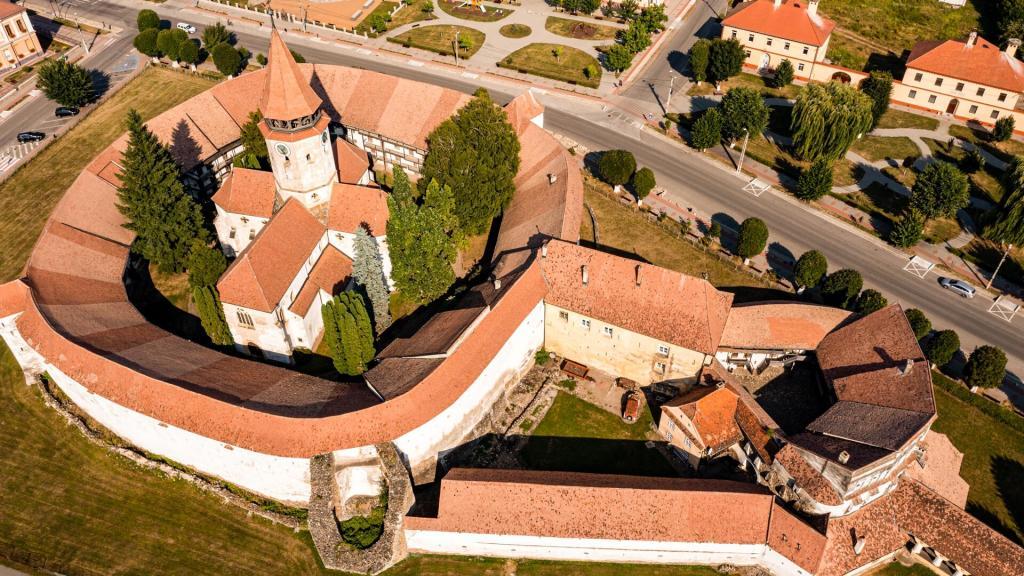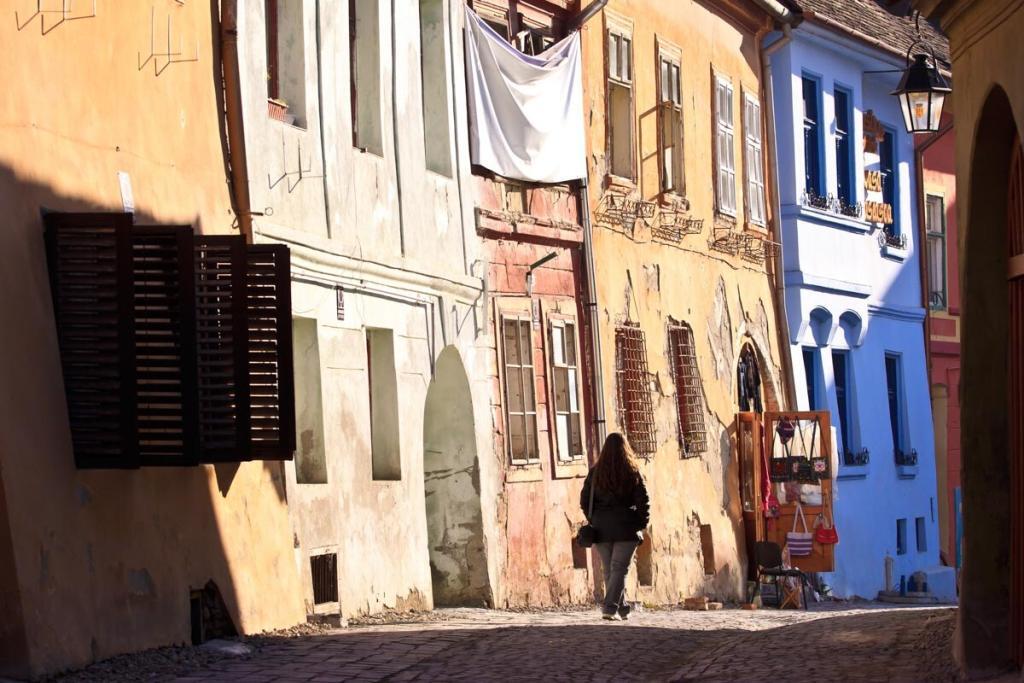Transylvania Fortified Churches
The Saxon history of Transylvania begins unofficially in middle 1100’s and officially in 1224 when the King of Hungary allowed the German peasants and merchants from Luxembourg and Flanders area to settle the southern part of the land to protect the Kingdom from invaders – the Genghis Khan tartars were at the peak of their expansion, displacing millions towards West and threatening the Medieval Kingdoms of Europe. In exchange, the colonists received support from the King and the rights to self-organise. They settled and used their independence and skill to build a thriving rural society, unique in the land populated till then by Romanians and Hungarians. To protect themselves and fulfil their initial purpose, they started building fortifications to defend from both tartars but also from the locals, envious of their wealth.
In Transylvania are more than 100 standing fortresses and fortified churches out of about 300 that were build in Middle Ages, forming a unique collection in the world and a landmark on the tourist map of Romania. Transylvanian villages with fortified churches offer a lively picture of the cultural landscape of this area. They are characterized by a specific system of farming the land, a pattern of settlement and organization of rural households, preserved since the Middle Ages, dominated by their fortified churches, showing the periods of the buildings that were built between the 13th and 16th centuries.
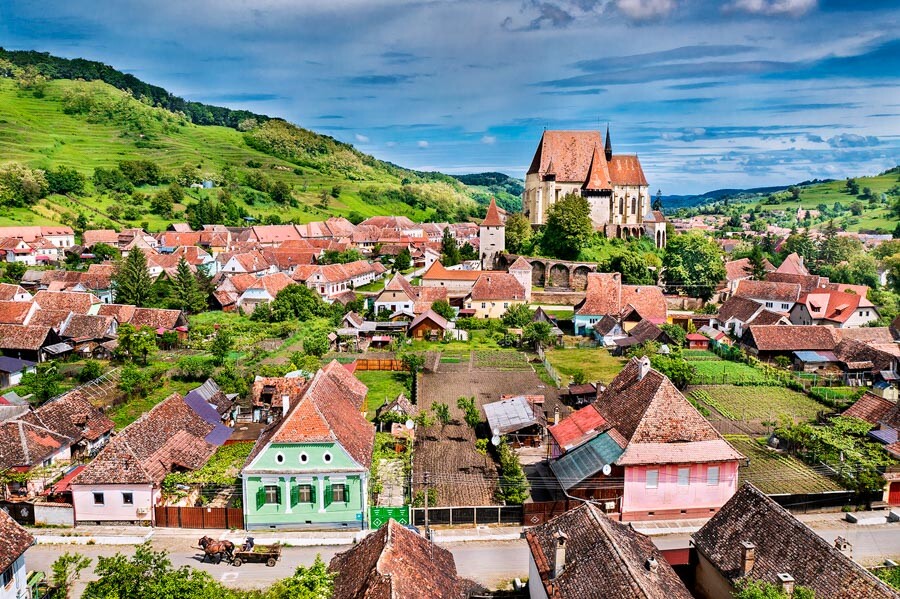
A considerable influence on the early fortified churches were the cistercian monks, well established in the area – the Carta Abbey started in 1205 and was finished before the end of the century – and the Teutonic Knights who, before conquering Prussia actually tried to create a Teutonic state in the east of the Saxon Country in early 1200’s, being expelled by the Hungarian King in 1225 – almost at the same time it gave settler rights to the Saxon Germans. Same people that built Marienburg/Feldioara castle in Transylvania went on to found Konigsberg in Prussia 20 years later. A humorous note at the Rosia Fortified Church proudly states that the church was founded earlier than Berlin. How would the history looked like if there were a Teutonic state in Transylvania rather than in Prussia? We’ll never know…
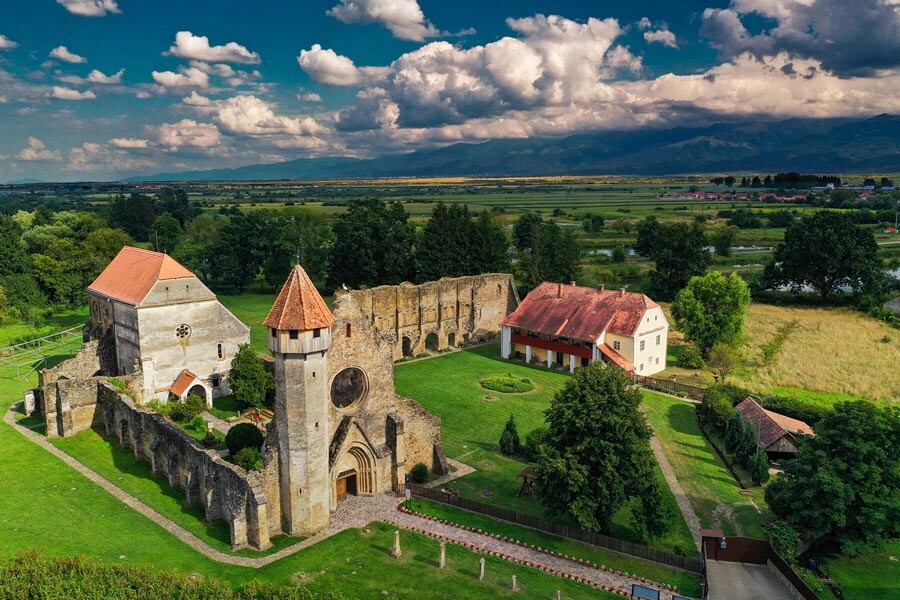
Fortified churches are generally located in southern Transylvania, between the rivers Tîrnava Mare and Olt, in Burzenland (Țara Bârsei), and the northernmost district of Bistrița. They were built mainly by Transylvanian Saxons, but also by Hungarians and Szeklers. In the Middle Ages, the area of present-day Romania was a fiercely contested border region. Time and again, Tatar invasions or Ottoman armies advanced into Europe. To defend themselves from the enemy, the inhabitants of the settlements protected their churches with strong fortifications. If conflict occurred, the inhabitants could withdraw here and protect themselves behind walls over a meter wide.
All the fortified churches are structured in such a way that the defense is carried out gradually and the whole structure does not collapse at once. Some fortifications also have defensive ditches dug outside the walls. Massive towers have been placed on the churches, defensive galleries have been built and everything has been fitted with battlements and noses. After the outside and inside walls had collapsed, the next step was to retreat into the towering church. The last place of defense was the tower built above the church choir, which had a narrow entrance and the combat was fought hand-to-hand. In addition to their defensive purpose, the walls were often extended with living and service rooms to withstand longer sieges.
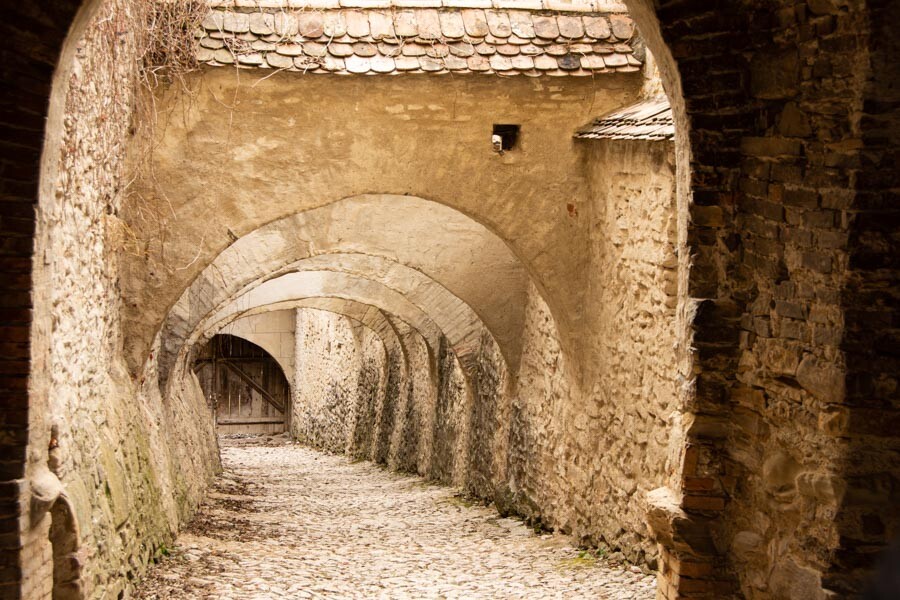
When under attack, the Saxons would withdraw with their animals inside the church walls, where food was stored and a fountain supplied water to increase their chances of survival in the eventuality of an assault. Each family stored, even in times of peace, not only grain but also smoked bacon and lard in specially designated spaces within the fortification walls. Every Sunday, the villagers used to cut up enough bacon or ham to cover them for a week, and the rest would be stored in the cool of the thick walls. This tradition was kept alive in some villages until the 20th century.
Most of the fortified citadels and churches of the Saxons in Transylvania date from the times before the Protestant Reform and have survived to this day. In the middle of the 16th century (between 1542-1550), the Church Reformation happened in Transylvania as well, with the Transylvanian Saxons converting to Lutheranism (Evangelical Church of the Augustan Confession). The Transylvanian Saxons regard these fortified churches as a symbol of community and identity – not just religious, but as a testimony to their will to be strong in the face of difficulties imposed by fate. Some of these fortified churches are still preserved in very good condition. Others, however, were neglected and have fallen into various stages of decay. The reason for this is not necessarily the unwillingness of local administrations, but the fact that many of the villages in which they were built have been depopulated. Unfortunately, the communist regime caused most of the Saxons to emigrate and abandon their old homes.
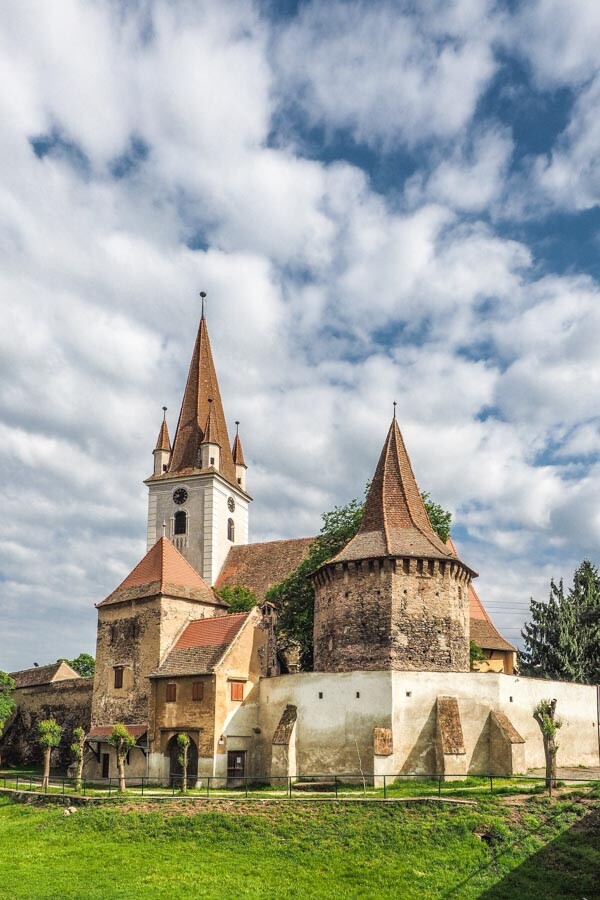
Around 160 of these fortified churches are still preserved today and can be visited throughout the settlement area of Transylvania. At the end of the 2000s, seven of these fortified churches were designated as UNESCO World Heritage Sites because they were testimony to the construction of medieval defensive fortifications in Transylvania. All seven are located in the southern part of Transylvania and can be easily integrated with a visit to Sibiu, Sighisoara, and Brasov. They are located in Valea Viilor/Wurmloch/Nagybaromlak and Biertan/Birthälm/Berethalom – in the Sibiu area, Câlnic/Kellenk/Kelnek – in the Alba Iulia area, Prejmer/Tartlau/Prázsmár and Viscri/Deutsch-Weisskirch/Szászfehéregyháza – in the Brasov area, Saschiz/Keisd/Szászkézd – in the Sighișoara area and Dârjiu/Székelyderzs – in the Odorheiu Secuiesc area.
But it’s not only the fortified churches that are points of interest for tourists: traveling through rural Romania is an experience in its own right. In the villages, often far from the big cities, time can sometimes seem to stand still. The daily habits of the locals have not changed much, and rural life is the same as it was a hundred years ago. No wonder why Prince Charles himself has fallen in love with these places!
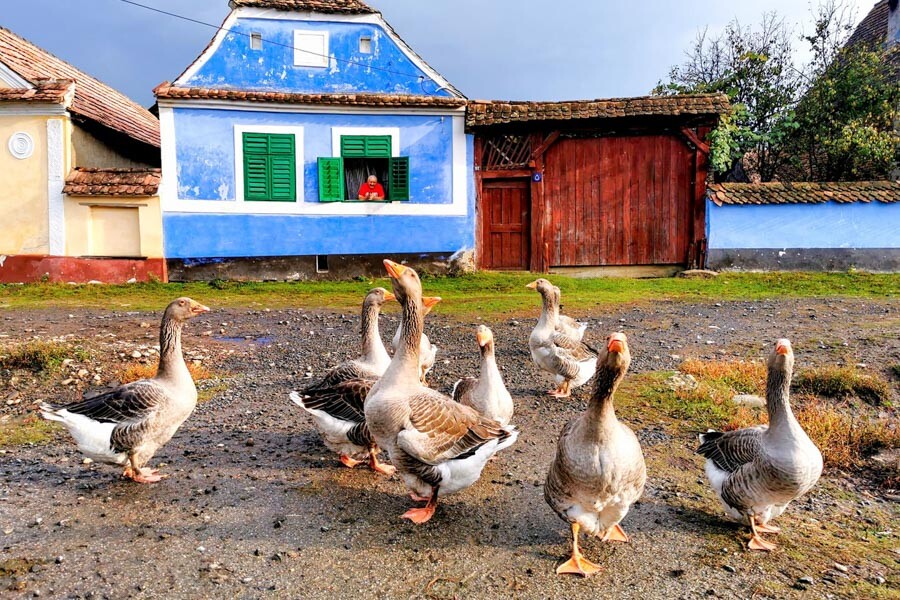
Many of the houses date back to the Middle Ages and preserve the authentic architecture of times gone by. People are still farming, and working the land using traditional methods. That’s very beneficial for nature and visitors to the area may enjoy observing not only less common plants and flowers but also different species of birds in their original habitat. Among other things, emblematic of the area are the stork nests you can see in each of these villages, many of them built right on the fortifications of churches. From about March to September, the storks are back every year, fledging young and learning to fly.
Last but not least, in addition to farming, some of these communities preserve a series of traditional crafts such as blacksmithing, pottery, carpentry, and basket braiding. And most of the fortified churches are in the charge of a local, authentic Transylvanian Saxon, who will tell you true stories about the history of the place.
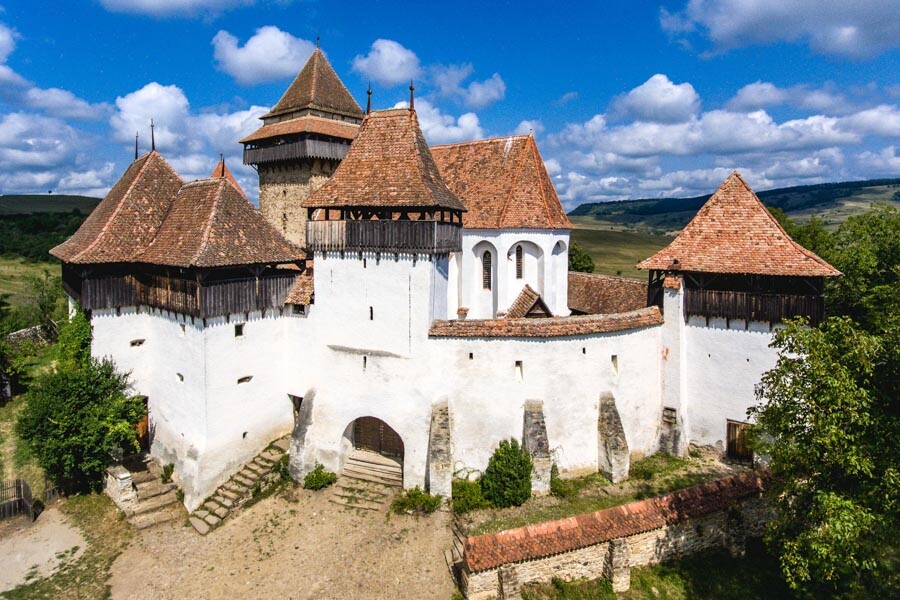
To be fully aware of the beauty of the area, you would need a couple of weeks in Romania. However, as not many people can afford a long stay, we can help you visit several of the most outstanding fortified fortresses in the areas of Brasov, Sighisoara, and Sibiu. You will not just enjoy the beauty and history of these fortresses, but we will also offer you the opportunity to discover the local people and their stories, and discover some of the traditional crafts practiced here over the years. We look forward to welcoming you!

